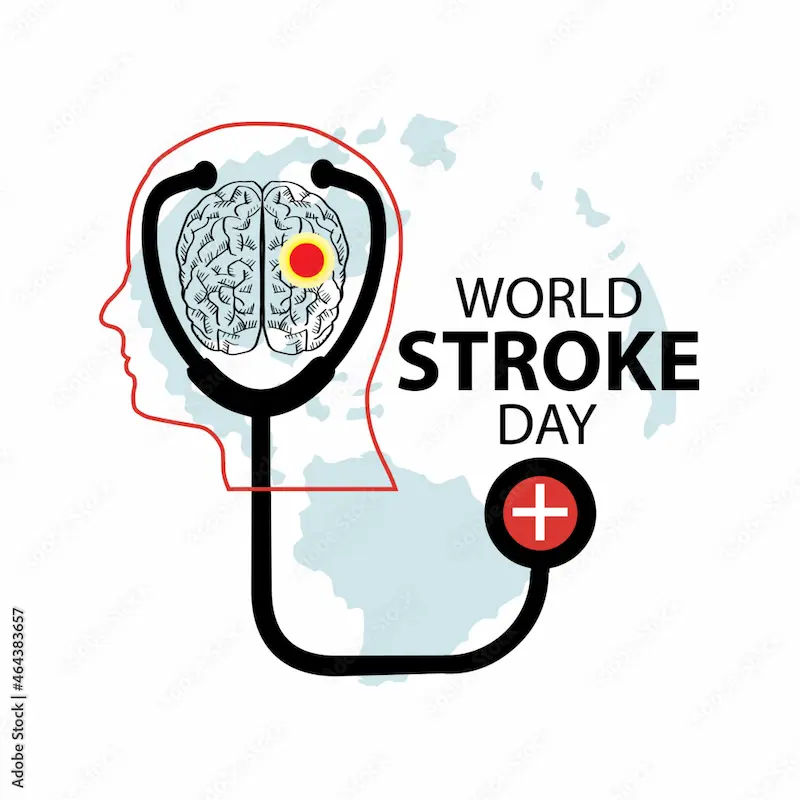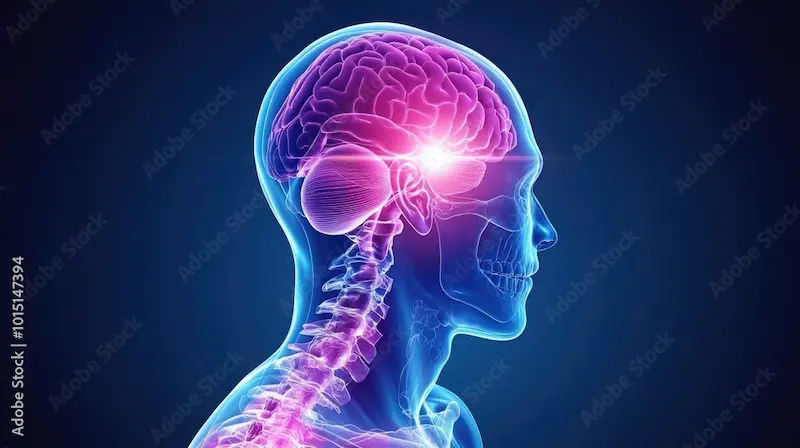Mini Stroke: Warning Signs, Causes, and Why It’s a Medical Emergency
Learn the warning signs, causes, and urgent reasons why a mini stroke (TIA) is a medical emergency. Early detection can prevent a major stroke. Know what to watch for and when to seek help.


Imagine suddenly losing vision in one eye, or your arm going numb for a few minutes, only for everything to return to normal. It might be tempting to brush it off as fatigue or a pinched nerve. But these fleeting episodes could be a mini stroke, a critical warning sign from your body that demands immediate attention. Medically known as a Transient Ischemic Attack (TIA), a mini stroke is caused by a temporary blockage of blood flow to the brain. While the symptoms are short-lived, often resolving within an hour, the implications are long-lasting and severe. This article will guide you through everything you need to know: from recognizing the often-subtle symptoms of a TIA and understanding its underlying causes to the urgent steps you must take. Ignoring it is a gamble with your health you cannot afford to take.
What is a Mini Stroke?
A mini stroke, or Transient Ischemic Attack (TIA), occurs when there is a brief disruption of blood supply to a part of the brain. The key word is "transient" – meaning temporary. Unlike a full ischemic stroke, the blockage (usually a blood clot) dissolves or moves on its own quickly, typically within minutes to a few hours. This means the brain tissue doesn't die, which is why the symptoms are not permanent.
However, calling it "mini" is dangerously misleading. It minimizes the grave significance of the event. A TIA is best understood as a warning stroke or a harbinger of a major, potentially devastating stroke to come.
TIA vs. Stroke: The Critical Difference
The fundamental difference between a TIA and a full stroke lies in the duration of the blockage and the resulting damage.
TIA: The blockage is temporary. Symptoms resolve completely, usually within one hour, and there is no permanent brain injury detectable on an MRI scan.
Ischemic Stroke: The blockage is persistent. It cuts off oxygen for long enough to cause brain cell death, leading to potentially permanent disability. The symptoms do not resolve on their own and require emergency medical treatment.
Think of it like a power outage. A TIA is a flicker of the lights—the power comes back on quickly. A full stroke is a prolonged blackout that can cause lasting damage to your electronic appliances (your brain).
Don't Ignore These Mini Stroke Symptoms
The symptoms of a TIA are identical to those of a full stroke. The only difference is how long they last. They appear suddenly and without warning.
The FAST Acronym: A Lifesaving Tool
The FAST test is a simple way to remember the most common signs:
F - Face Drooping: Does one side of the face droop or feel numb? Ask the person to smile. Is the smile uneven?
A - Arm Weakness: Is one arm weak or numb? Ask the person to raise both arms. Does one arm drift downward?
S - Speech Difficulty: Is speech slurred, strange, or hard to understand? Ask the person to repeat a simple phrase.
T - Time to Call Emergency Services: If you observe any of these signs, even if they disappear, call for an ambulance immediately. Note the time when the symptoms first appeared.
Beyond FAST: Other Subtle Warning Signs
A mini stroke can also present with other neurological symptoms, including:
Sudden numbness or weakness in the leg.
Sudden confusion, trouble understanding speech.
Sudden trouble seeing in one or both eyes (blurred or blackened vision).
Sudden trouble walking, dizziness, loss of balance, or lack of coordination.
A sudden, severe headache with no known cause.
Unique Insight: Some people experience "silent" TIAs with symptoms so brief and mild they are easily dismissed—like a momentary wave of dizziness or a few seconds of blurred vision. Any sudden, unexplained neurological event, no matter how brief, warrants a doctor's evaluation.
What Causes a Transient Ischemic Attack (TIA)?
A TIA is fundamentally a problem of blood flow. It's most often caused by a tiny blood clot that lodges itself in an artery supplying the brain, creating a temporary blockage.
The Role of Blood Clots and Atherosclerosis
The most common culprit is atherosclerosis—a condition where arteries become clogged with fatty deposits called plaques. These plaques can:
1. Narrow the Artery: Reducing blood flow to the brain.
2. Rupture: A ruptured plaque can trigger the formation of a blood clot (thrombus) right at the site.
3. Send Emboli: A piece of the clot (an embolus) can break off, travel through the bloodstream, and get stuck in a smaller brain artery.
This process is why managing cholesterol and blood pressure is so critical to TIA and stroke prevention.
Less Common Causes of a TIA
Other conditions can increase the risk of clot formation, including:
Atrial Fibrillation (AFib): An irregular heartbeat that can cause blood to pool and clot in the heart. These clots can then travel to the brain.
Blood Disorders: Conditions that make the blood more prone to clotting.
Arterial Dissection: A tear in the lining of a neck artery.
Who is at Risk for a Mini Stroke?
Understanding your risk profile is a powerful step in prevention.
Non-Modifiable Risk Factors (Age, Family History)
Age: Risk increases significantly after age 55.
Family History: A family history of stroke or TIA increases your risk.
Gender: Men have a slightly higher risk of TIA, but women are more likely to die from a stroke.
Race: African Americans have a higher risk of death from a stroke due to a higher prevalence of high blood pressure and diabetes.
Modifiable Risk Factors You Can Control
High Blood Pressure (Hypertension): The single most important controllable risk factor.
High Cholesterol: Leads to the buildup of plaques in arteries (atherosclerosis).
Cardiovascular Disease: Heart failure, heart defects, or AFib.
Diabetes: Increases the severity of atherosclerosis.
Smoking: Damages blood vessels and accelerates clot formation.
Physical Inactivity and Obesity.
Why a TIA is a Medical Emergency?
This is the most critical message. A TIA is not a "wait and see" event. It is a five-alarm fire. The statistics are unequivocal:
Without treatment, about 1 in 5 people who have a TIA will go on to have a full-blown stroke within 90 days.
Nearly half of these subsequent strokes happen within the first 48 hours after the TIA.
Seeking immediate emergency care allows doctors to:
Run tests to confirm the diagnosis.
Identify the cause of the TIA.
Start treatment immediately to dramatically reduce your risk of a major stroke.
Consult Top Specialists
How is a Mini Stroke Diagnosed?
If you present to the ER with suspected TIA symptoms, doctors will act quickly.
The Initial Assessment in the ER
A neurologist will perform a physical and neurological exam, checking your vision, speech, strength, and coordination. They will use standardized scales like the NIH Stroke Scale.
Advanced Imaging Scans: MRI and CT
MRI with Diffusion-Weighted Imaging (DWI): This is the gold standard for diagnosing TIA. It can detect even tiny areas of brain cell damage that might not be permanent but confirm the event occurred.
CT Scan: Often used first in the ER to rule out bleeding or a major stroke.
Finding the Source: Heart and Blood Vessel Tests
Carotid Ultrasound: To check the neck arteries for narrowing or plaques.
Echocardiogram: An ultrasound of the heart to look for clots, pumping problems, or structural issues.
Blood Tests: To check for high cholesterol, diabetes, and clotting disorders.
If your condition requires ongoing monitoring or specialized blood tests, Apollo24|7 offers convenient home collection for tests like lipid profile or HbA1c, making follow-up care easier.
Mini Stroke Treatment: Preventing The Big One
The goal of treatment is not to "cure" the TIA—it's already over. The goal is to prevent the next, more devastating event.
Medications to Reduce Clot Risk
Anti-platelet Drugs: Aspirin and clopidogrel (Plavix) make platelets less "sticky" and prevent them from clumping together to form clots.
Anticoagulants: (e.g., warfarin, dabigatran) are used if the TIA was caused by a heart condition like AFib. They target the proteins involved in clotting.
Surgical Procedures for Blocked Arteries
Carotid Endarterectomy: A surgeon removes plaques from the carotid arteries in the neck.
Angioplasty/Stenting: A balloon is used to widen the narrowed artery, and a mesh tube (stent) is inserted to keep it open.
The Power of Lifestyle Modifications
This is non-negotiable. Doctors will work with you to:
Manage high blood pressure and cholesterol.
Control diabetes.
Adopt a heart-healthy diet (e.g., DASH or Mediterranean diet).
Incorporate regular exercise.
Quit smoking and limit alcohol.
Recovery and Long-Term Management
Physically, you may feel completely recovered. However, the psychological impact can be significant.
Emotional and Cognitive Impacts
Anxiety, depression, and a fear of recurrence are common. Some people report subtle cognitive changes like "brain fog" or minor memory issues after multiple TIAs. It's important to discuss these feelings with your doctor.
The Importance of Follow-Up Care
Adhering to your medication regimen and attending all follow-up appointments is crucial. If symptoms persist beyond two weeks or you have concerns about your recovery, consult a doctor online with Apollo24|7 for further evaluation and peace of mind.
Can You Prevent a Mini Stroke?
Absolutely. While you can't change your age or genetics, you have immense control over the modifiable risk factors. By managing your vascular health through diet, exercise, not smoking, and working with your doctor to control medical conditions, you can drastically lower your odds of experiencing a TIA or stroke.
Conclusion
A mini stroke is your body's most urgent distress signal. It is a transient event with permanent implications, offering a critical window of opportunity to prevent a life-altering catastrophe. Recognizing the signs—face drooping, arm weakness, speech difficulty—and acting with lightning speed by calling for emergency help is the single most important thing you can do. The journey doesn't end in the ER; it begins there. Through a combination of modern medicine, surgical interventions when necessary, and committed lifestyle changes, you can seize control of your health. View a TIA not as a diagnosis of frailty, but as a powerful warning that empowers you to take decisive action. Your next step is crucial: if you have any risk factors or experienced something you now suspect was a TIA, consult a doctor today. Your brain depends on it.
Consult Top Specialists
Consult Top Specialists

Dr. Sumanjita Bora
Cardiologist
9 Years • MBBS, PGDCC
Bengaluru
Apollo Clinic, Sarjapur Road, Bengaluru
Dr Manjunath Suresh Pandit
Cardiologist
12 Years • MBBS, M.D. (Paediatrics), D.M. (Cardiology)
Bangalore
Apollo Clinic Bellandur, Bangalore

Dr. Anand Ravi
General Physician
2 Years • MBBS
Bengaluru
PRESTIGE SHANTHINIKETAN - SOCIETY CLINIC, Bengaluru

Dr. Shilpa Jayaprakash
Cardiologist
12 Years • MBBS, MD General Medicine, DM Cardiology
Bengaluru
Apollo Clinic, JP nagar, Bengaluru

Dr. Bhethala Sharan Prakash
General Physician/ Internal Medicine Specialist
5 Years • MBBS MD
Bengaluru
PRESTIGE SHANTHINIKETAN - SOCIETY CLINIC, Bengaluru
More articles from Stroke
Frequently Asked Questions
1. How long do mini stroke symptoms typically last?
Most TIA symptoms resolve completely within one hour, often within a few minutes. However, any neurological symptom that lasts longer than a few moments requires immediate emergency evaluation, as it could be a full stroke.
2. Can you have a mini stroke and not know it?
Yes, it's possible to have a 'silent TIA' with very mild symptoms, such as a brief moment of dizziness or a fleeting patch of numbness. These are often mistaken for something else. Any unexplained, sudden neurological symptom should be discussed with a doctor.
3. What is the life expectancy after a TIA?
With proper treatment and management of risk factors, life expectancy after a TIA can be nearly normal. The key is aggressively adhering to the prevention plan outlined by your healthcare team to avoid a major stroke.
4. Is it safe to drive after having a mini stroke?
Laws vary by country and state. In many places, you are legally required to inform the licensing authority and must not drive for a certain period (e.g., one month). Your doctor will advise you on when it is medically and legally safe to resume driving.
5. Can stress cause a TIA?
While stress itself does not directly cause a TIA, it is a significant contributor to high blood pressure and unhealthy behaviors (poor diet, smoking) that are major risk factors. Managing stress is an important part of overall stroke prevention.




